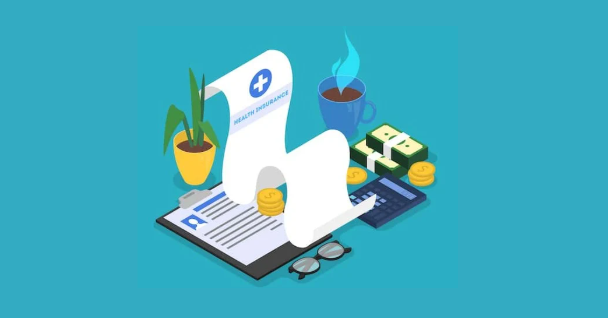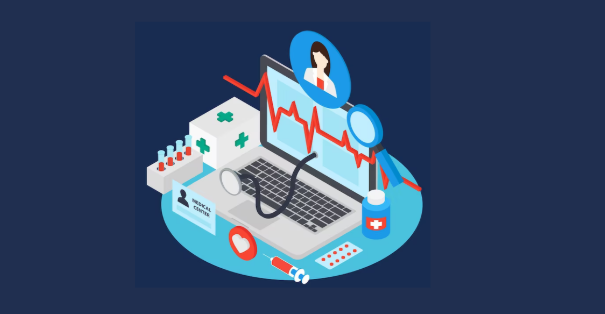
In the dynamic landscape of healthcare, the integration of technology has become paramount in enhancing patient care and streamlining operational processes. One such innovative tool that is revolutionizing the industry is medical billing and coding analytics. By harnessing the power of data-driven insights, healthcare providers can significantly improve their efficiency, accuracy, and ultimately, patient outcomes.
Enhanced Accuracy and Efficiency:
Using medical billing and coding analytics can significantly enhance accuracy and efficiency in healthcare operations, ultimately leading to improved healthcare outcomes. Here’s how:
Identification of Billing Errors:
Analytics tools can analyze medical billing data to identify errors such as duplicate charges, incorrect billing codes, or unbundling of services. By rectifying these errors, healthcare providers can ensure accurate billing, reduce claim denials, and improve revenue cycle management.
Optimized Reimbursement:
Medical billing and coding analytics can help healthcare organizations optimize reimbursement by identifying under coded or missed services. By ensuring that all services rendered are properly documented and billed, providers can maximize revenue and financial sustainability.
Detection of Fraud and Abuse:
Advanced analytics can detect patterns indicative of fraudulent or abusive billing practices. By flagging suspicious claims for further investigation, healthcare organizations can mitigate financial losses and uphold ethical standards, ultimately protecting both patients and payers.
Improved Financial Performance:
Improving financial performance is one of the key benefits of utilizing medical billing and coding analytics in healthcare. Here’s how it works:
Optimized Revenue Cycle Management (RCM):
By analyzing billing and coding data, healthcare providers can identify inefficiencies in their revenue cycle. This includes pinpointing areas of revenue leakage, such as under coding or missed charges, and taking corrective actions to ensure all services rendered are accurately captured and billed for.
Reduced Claim Denials:
Analytics can help identify patterns leading to claim denials, whether due to coding errors, lack of documentation, or other reasons. By addressing these issues, providers can reduce the number of denied claims and accelerate reimbursement, improving cash flow and overall financial performance.
Enhanced Compliance:
Medical billing and coding analytics can aid in identifying compliance risks, such as billing for services not provided or upcoding. By ensuring accurate and compliant billing practices, providers can avoid costly penalties and fines while maintaining a positive reputation.
Optimized Resource Allocation:
Optimized resource allocation in medical billing and coding analytics can significantly improve healthcare outcomes by streamlining processes, reducing costs, and enhancing patient care. Here’s how:
Identification of Revenue Leakage:
Medical billing and coding analytics can help identify instances of underbilling or missed revenue opportunities. By analyzing claims data and identifying patterns, healthcare providers can ensure that they are accurately billing for the services provided, maximizing revenue and financial resources.
Efficient Coding Practices:
By analyzing coding patterns and trends, healthcare organizations can identify areas where coding practices can be optimized for efficiency and accuracy. This can help reduce the risk of coding errors, claim denials, and audits, leading to faster reimbursement and improved cash flow.
Resource Utilization:
Analytics can help healthcare organizations understand utilization patterns for resources such as equipment, facilities, and personnel. By identifying inefficiencies or bottlenecks, providers can allocate resources more effectively, reducing wait times, improving patient throughput, and enhancing overall operational efficiency.
Data-Driven Decision Making:

Data-driven decision-making in medical billing and coding analytics offers several benefits for improving healthcare outcomes:
Identification of Trends and Patterns:
By analyzing large volumes of billing and coding data, healthcare organizations can identify trends and patterns in patient demographics, treatment modalities, and reimbursement rates. This insight enables providers to tailor their services to meet the specific needs of their patient population, leading to more effective healthcare delivery and improved outcomes.
Optimized Revenue Cycle Management:
Data-driven analytics can help healthcare organizations streamline their revenue cycle management processes by identifying inefficiencies, reducing claim denials, and accelerating reimbursement. This ensures that providers have the financial resources necessary to invest in quality improvement initiatives and enhance patient care outcomes.
Early Detection of Billing Errors and Fraud:
Medical billing and coding analytics can flag potential billing errors, discrepancies, and instances of fraud, such as upcoding or unbundling of services. By detecting these issues early, healthcare organizations can take corrective action to ensure accurate billing practices and protect against financial losses, ultimately safeguarding the integrity of patient care.
Enhanced Compliance and Risk Management:
Enhanced compliance and risk management are crucial aspects of healthcare operations, especially in the context of medical billing and coding. Here’s how leveraging medical billing and coding analytics can contribute to these goals and ultimately improve healthcare outcomes:
Identification of Billing Errors:
Analytics tools can analyze billing data to detect errors such as upcoding, unbundling, or incorrect coding. By identifying and rectifying these errors, healthcare providers can ensure compliance with regulatory standards and reduce the risk of audits or penalties.
Fraud Detection:
Advanced analytics can detect patterns indicative of fraudulent activities, such as billing for services not rendered or billing for unnecessary procedures. By promptly identifying and addressing instances of fraud, healthcare organizations can mitigate financial losses and uphold ethical standards.
Compliance Monitoring:
Analytics platforms can continuously monitor billing practices against relevant regulations and guidelines, flagging any deviations for further investigation. This proactive approach helps healthcare organizations stay compliant with evolving regulatory requirements and industry standards.
Facilitated Quality Improvement Initiatives:
Facilitated Quality Improvement Initiatives in the benefits of using medical billing and coding analytics to improve healthcare outcomes. Medical billing and coding analytics can significantly enhance healthcare outcomes by providing invaluable insights into various aspects of patient care, revenue management, and operational efficiency. As a facilitator of quality improvement initiatives, leveraging these analytics can yield several benefits:
Identifying Billing Errors:
Medical billing and coding analytics can pinpoint errors in billing processes, such as incorrect codes or missed charges. By rectifying these errors, healthcare providers can ensure accurate reimbursement, optimize revenue, and prevent financial losses.
Enhancing Revenue Cycle Management:
Analyzing billing and coding data enables healthcare organizations to streamline their revenue cycle management processes. By identifying bottlenecks, inefficiencies, and areas for improvement, providers can accelerate reimbursement cycles, reduce denials, and optimize cash flow.
Improving Compliance:
Medical billing and coding analytics help ensure compliance with regulatory requirements and coding guidelines. By identifying potential compliance issues, such as upcoding or unbundling, healthcare organizations can mitigate compliance risks, avoid penalties, and maintain ethical billing practices.
Empowered Clinical Decision Support:

Empowered Clinical Decision Support (CDS) integrated with medical billing and coding analytics can significantly enhance healthcare outcomes in several ways:
Data-Driven Insights:
By analyzing medical billing and coding data, healthcare providers can gain valuable insights into patient demographics, treatment patterns, and outcomes. This data can be leveraged to identify trends, risk factors, and areas for improvement in clinical decision-making.
Personalized Medicine:
CDS systems can use medical billing and coding analytics to tailor treatment plans to individual patients based on their medical history, genetic makeup, and other relevant factors. This personalized approach can lead to more effective interventions and better patient outcomes.
Reduced Errors:
Medical billing and coding analytics can help identify coding errors and discrepancies, ensuring that healthcare providers accurately document patient encounters. By reducing errors in documentation, CDS systems can help prevent misdiagnoses, improper treatments, and other adverse events.
Enhanced Accuracy and Efficiency:
Using medical billing and coding analytics can significantly enhance accuracy and efficiency in healthcare, leading to improved outcomes for both patients and providers. Here are some key benefits:
Identification of Trends and Patterns:
Medical billing and coding analytics allow healthcare organizations to analyze large volumes of data to identify trends and patterns in patient care, billing practices, and reimbursement patterns. By understanding these trends, providers can make informed decisions to improve care delivery and financial performance.
Optimized Revenue Cycle Management:
By analyzing billing and coding data, healthcare organizations can identify opportunities to optimize the revenue cycle. This includes reducing claim denials, improving coding accuracy, and streamlining billing processes. By maximizing revenue collection, providers can reinvest resources into patient care and infrastructure improvements.
Detection of Billing Errors and Fraud:
Medical billing and coding analytics can help identify billing errors and potential instances of fraud. By flagging inconsistencies in coding practices or unusual billing patterns, healthcare organizations can take proactive steps to address these issues, ensuring compliance with regulations and reducing financial losses.
Improved Financial Performance:
Using medical billing and coding analytics can significantly enhance financial performance within the healthcare sector. Here are some key benefits:
Revenue Optimization:
Analyzing medical billing and coding data can identify areas where revenue is being lost due to coding errors, missed charges, or denials. By addressing these issues, healthcare providers can ensure they are accurately reimbursed for the services they provide, thereby optimizing revenue.
Cost Reduction:
Analytics can help identify inefficiencies in billing processes, such as redundant or unnecessary procedures, which can lead to unnecessary costs. By streamlining billing operations, healthcare organizations can reduce administrative expenses and improve overall cost-effectiveness.
Improved Compliance:
Medical billing and coding analytics can help ensure compliance with complex healthcare regulations and coding guidelines. By identifying and rectifying compliance issues proactively, healthcare providers can avoid costly penalties and legal liabilities.
Optimized Resource Allocation:

Optimizing resource allocation in healthcare, particularly through the utilization of medical billing and coding analytics, can significantly enhance healthcare outcomes. Here’s how:
Efficient Utilization of Resources:
Medical billing and coding analytics can provide insights into where resources are being utilized most effectively and where there may be inefficiencies. By analyzing billing data, healthcare providers can identify areas of high resource utilization and reallocate resources accordingly to ensure optimal use.
Identification of Trends and Patterns:
Analyzing billing and coding data allows healthcare organizations to identify trends and patterns in patient care. This includes identifying common procedures, diagnoses, and treatments, as well as variations in care delivery. By understanding these patterns, providers can make informed decisions about resource allocation to address areas of high demand or areas where care may be lacking.
Cost Reduction:
Through the analysis of billing and coding data, healthcare organizations can identify opportunities to reduce costs without compromising patient care. This may involve renegotiating contracts with suppliers, identifying areas of waste, or streamlining administrative processes. By reducing costs, providers can free up resources to invest in other areas of care delivery.
Conclusion
the benefits of leveraging medical billing and coding analytics are vast and impactful. By harnessing the power of data-driven insights, healthcare providers can enhance operational efficiency, optimize revenue performance, and, most importantly, improve patient outcomes. As the healthcare landscape continues to evolve, embracing technology-enabled solutions like medical billing and coding analytics will be essential for driving innovation and delivering high-quality, patient-centered care.
Recent Comments